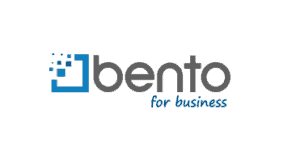One of the leading economic indicators of the US economy is the Purchasing Managers Index, or PMI. It’s based on current trends in business to business spending. More importantly, it indicates how the economy will react to those trends. You may well be contributing to the data whenever you get out your P-Card. Learn more about P-Cards and what they offer.
The Institute for Supply Management maintains two versions of the indicator: the PMI, which looks at manufacturing companies, and the NMI, which looks at non-manufacturing companies. Each month, the ISM sends out a survey to its panel of business purchasing managers and supply chain executives, about 300 for each of the two indicators. The questions ask about production, business activity, new orders, new export orders, imports, employment, inventories, prices, lead times, and the timeliness of supplier deliveries in their companies. It asks them to compare activity in the current month to the previous month.
How leading indicators work
Economists divide indicators into three groups: leading, coincident, and lagging. Leading indicators are used to predict future economic movements. Coincident indicators show what is happening right now, and lagging indicators describe what happened in the past. They all have value; a lagging indicator, for example, can help policymakers and planners understand an economic cycle better so that they can help people manage in the future. When you use your p-card now, it sets off a chain of transactions that effect the economy in the future.
The leading indicators are the ones that most people care about because they can help guide future decisions. The PMI and NMI help people what’s happening with business activity. Normally, business activity changes before consumer activity does. When the economy is improving, businesses will ramp up production to meet demand when consumers are ready to spend money. And, they will slow down production if they think the economy is about to turn down so that they don’t get caught short by a recession.
When the PMI and NMI are above 50%, the economy is generally moving toward expansion. When they are below 50%, the economy is generally about to contract.
The surveyed managers are looking not only at their own plans, but also at what they see from other businesses they work with. If you supply a survey participant, your ability to meet demand and the prices you are charging will be considered. If you purchase from one, the amount you order and price you are willing to pay will show up.
Your procurement, the PMI, and the NMI
A purchasing card, of course, is nothing more than a credit card or debit card used to buy items for the business rather than, say, travel and entertainment or fuel. It is sometimes called a procurement card or a p-card. Bento offers flexible Visa debit cards, digital payments, and ACH payments that can be used to procure goods and services from other businesses. This p-card alternative helps businesses see their spending so they can manage for growth.
We believe in the power of small businesses to shape the US economy and strengthen local communities. Their expenditures drive economic growth, and they show up in the PMI and NMI numbers. Think about that the next time you pull out your p-card.
By the way, if you are interested in having your company represented on the panel, you can submit an application to the ISM. For the most part, they are looking for large companies. However, they need to make sure that their survey represents the broader economy.
Want to find out more?
- Our Bento Pay feature lets you pay businesses by email.
- Sign up for a free trial.
- Get a customized demo.






